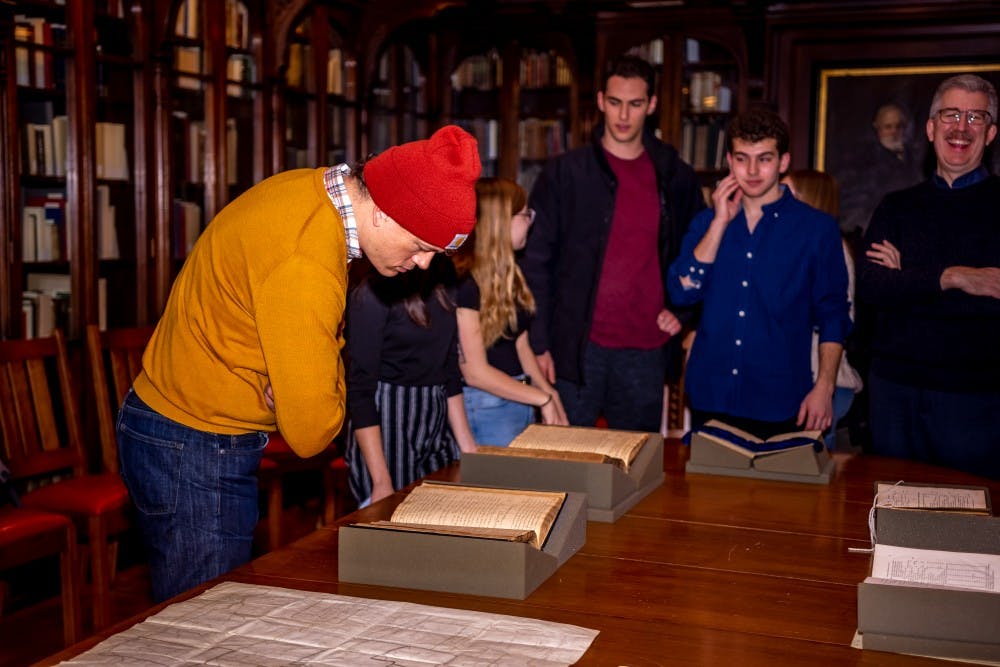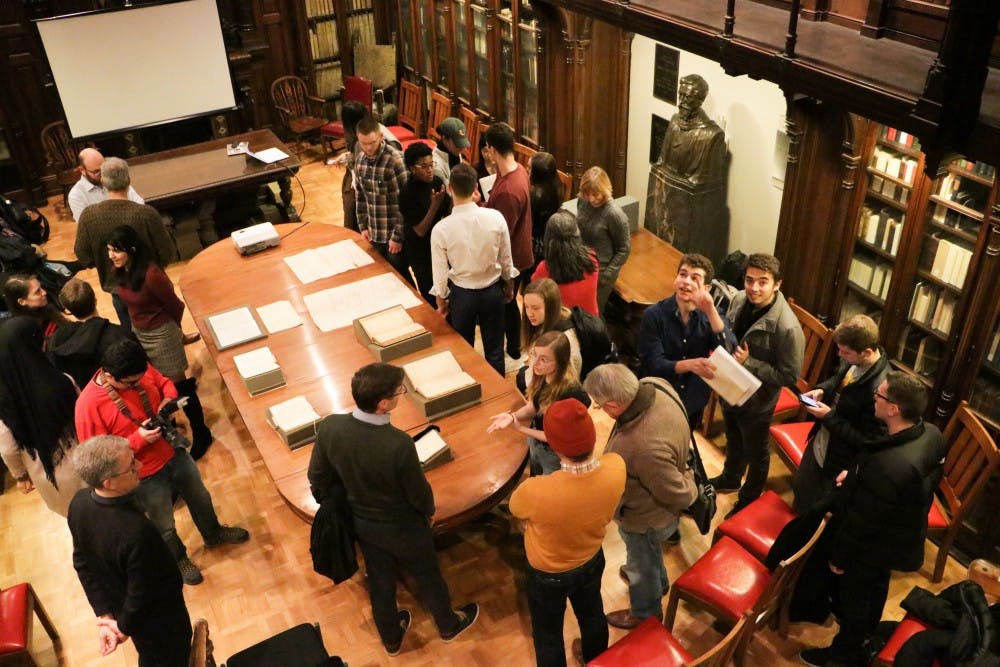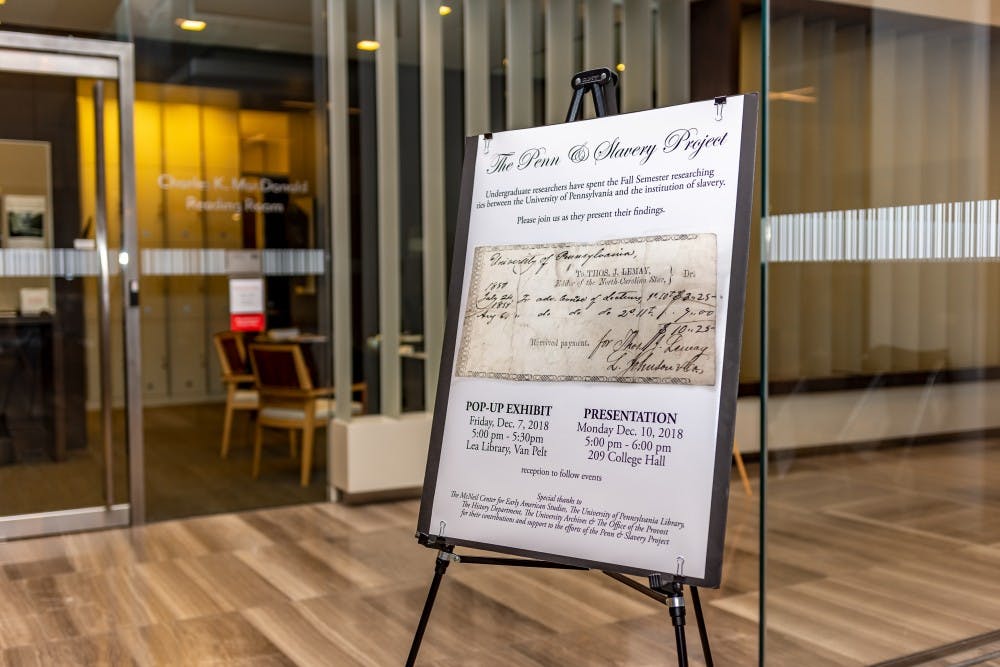
Three months after Penn President Amy Gutmann formally acknowledged Penn’s ties to slavery in a University-wide email, student research revealed Penn's connection to slavery is more expansive than previously known.
On Friday, four students presented research related to Penn Slavery Project's findings that documented the relationships that several high-level faculty at Penn's medical school had with slavery — including the enslaved people they owned as well as the racist ideology they promoted in their work. The students also detailed the relationship between the University and owners of enslaved people, who rented property from Penn and had enslaved people work on that land.
With the guidance of History professor Kathleen Brown, the five undergraduate researchers in the Penn Slavery Project found in 2017 that of 28 founding University trustees they investigated, 20 held enslaved people. Their discovery led to the formation of Penn's faculty working group to look further into these claims.
The previous findings also prompted a new research seminar this semester, History 273, to expand on the work. Ten students, including those from the Penn Slavery Project, have joined the research course this fall under Brown's guidance, which led to these most recent developments.
The students who presented on Dec. 7 focused on the connection between Penn real estate and slavery, as well as the medical school’s complicity in racist ideologies of the time. Displayed on the tables in front of the students were archival materials from the University and the Kislak Center that led to their findings.
Looking into various maps and Board of Trustees minutes, the students found that Penn collected rent from owners of enslaved people while managing Norristown, the University's most profitable landholding from the mid-1700s to the 1800s.
“Slaves were working the land for over a decade and Penn profited off of the rent,” said College junior Dillon Kersh, who was both part of the original Penn Slavery Project and the research seminar.

The students also presented that several high-profile figures at Penn's medical school, including the reportedly progressive Benjamin Rush and prominent professor William Horner, benefited from the racial dynamics surrounding slavery. In the University's early years, Penn lecturers such as Samuel Morton and Josiah Nott supported popular pseudoscience that "pushed ideas of racism and the justifications of racism," College junior Archana Upadhyay said.
Although Rush has become known as a progressive intellectual, College junior Brooke Krancer, The Daily Pennsylvanian audience engagement director, said in the presentation that he owned an enslaved person named William Grubber. She said Rush also spread the notion that black people were immune to yellow fever. Meanwhile, numerous black people died from yellow fever while aiding white people who caught the disease.
Upadhyay's research suggested the use of black bodies for dissections and teaching purposes was pervasive in the medical school. According to Krancer's research, Rush had dissected a 16-year-old black girl's body without any mention of her consent.
The presentation also pointed to evidence that Horner disinterred the body of a Cherokee man while Frederick Schafhirt obtained specimens by grave-robbing.
The students, however, said they have more to uncover. In their next steps they hope to shift focus towards the voices of those enslaved, including Grubber, the enslaved people who worked the land in Norristown, and the multiple people dissected in the medical school.
All 10 students who were part of the research seminar will discuss their findings in a culminating presentation on Monday, Dec. 10.

“It's very exciting for me as a professor to see the students take the research so seriously because it will have an impact on the conversation we have here at Penn,” Brown said. “That is so different from most history classes, and that's what makes this an amazing experience for the instructor and students.”
The students' findings join those by the faculty research group, which uncovered that 75 of Penn’s former trustees were owners of enslaved people, including Penn’s first provost William Smith. At the beginning of this semester, Gutmann announced these findings in an email the Penn community.
"[Slavery] was a profoundly painful and odious part of our nation's history," she wrote. "No segment of American society or institution founded during the 18th Century, including the University of Pennsylvania, escaped its scourge. Far from it."
Two years ago, a Penn spokesperson said the University "found no direct University involvement with slavery or the slave trade."
The Daily Pennsylvanian is an independent, student-run newspaper. Please consider making a donation to support the coverage that shapes the University. Your generosity ensures a future of strong journalism at Penn.
Donate







